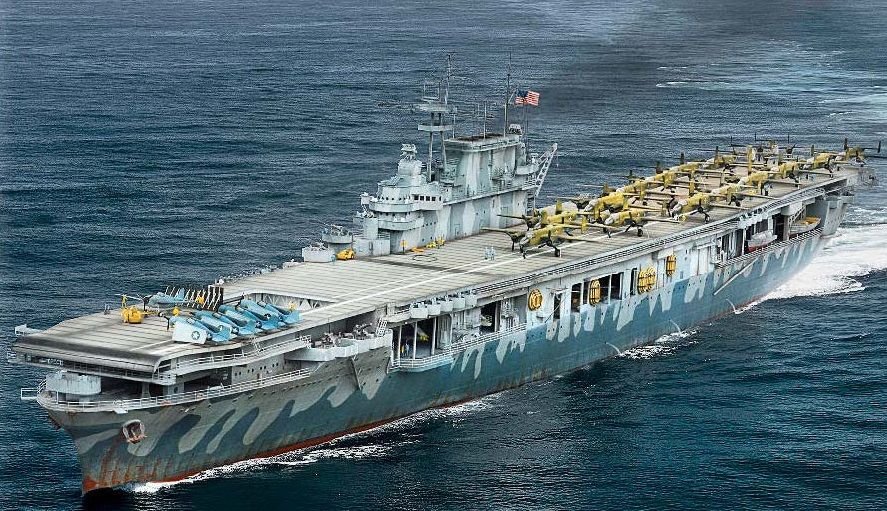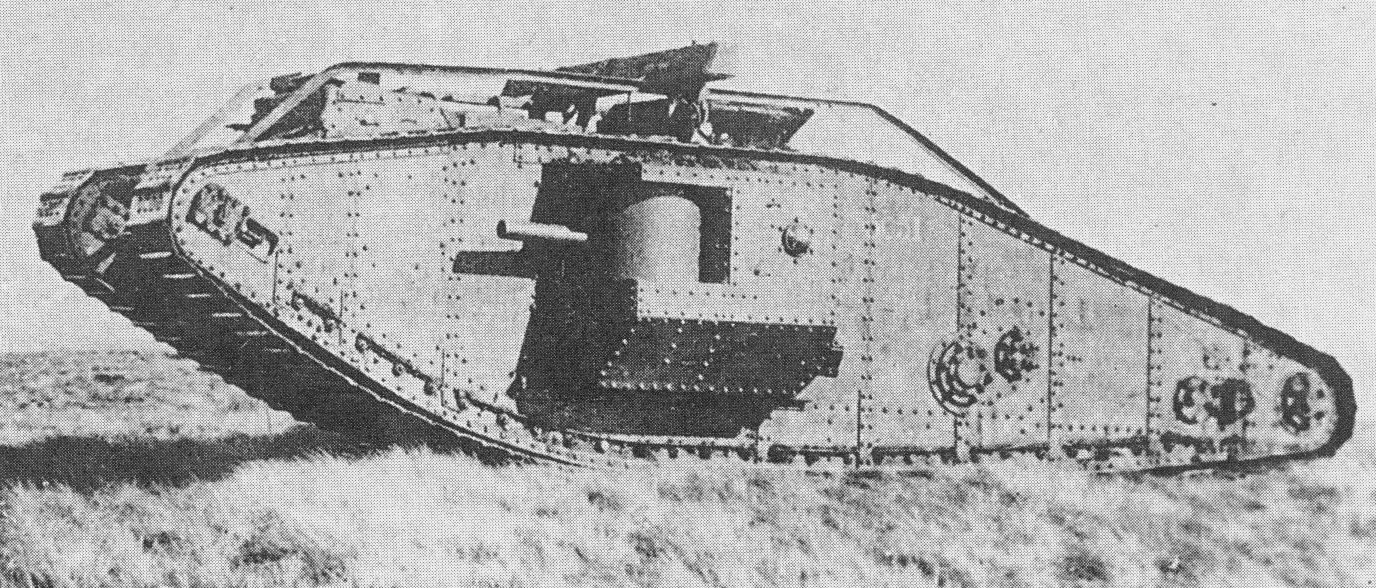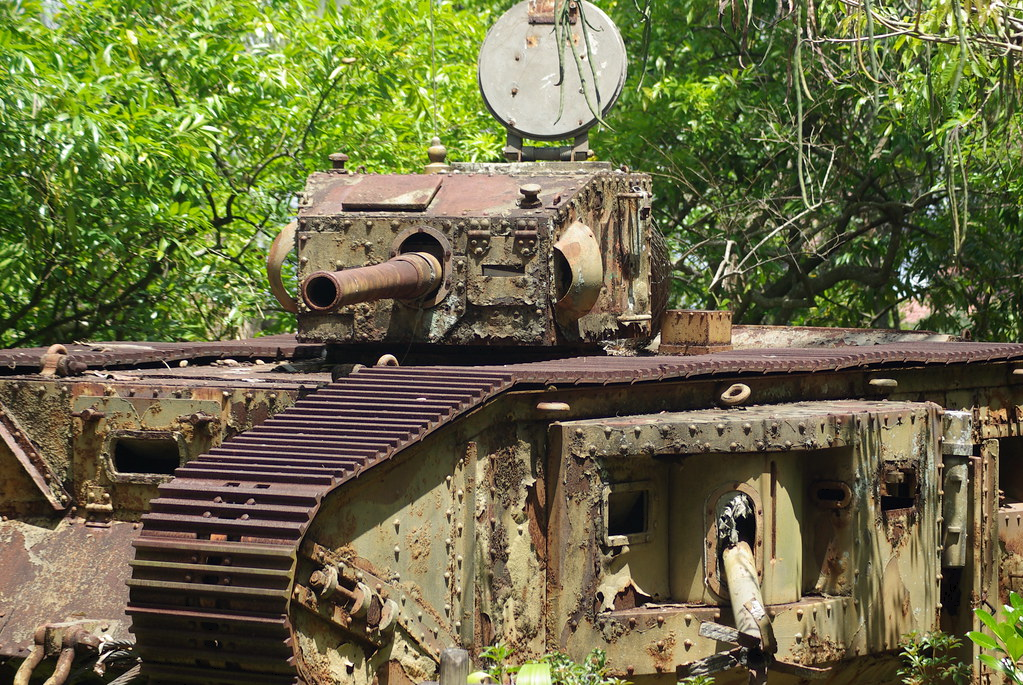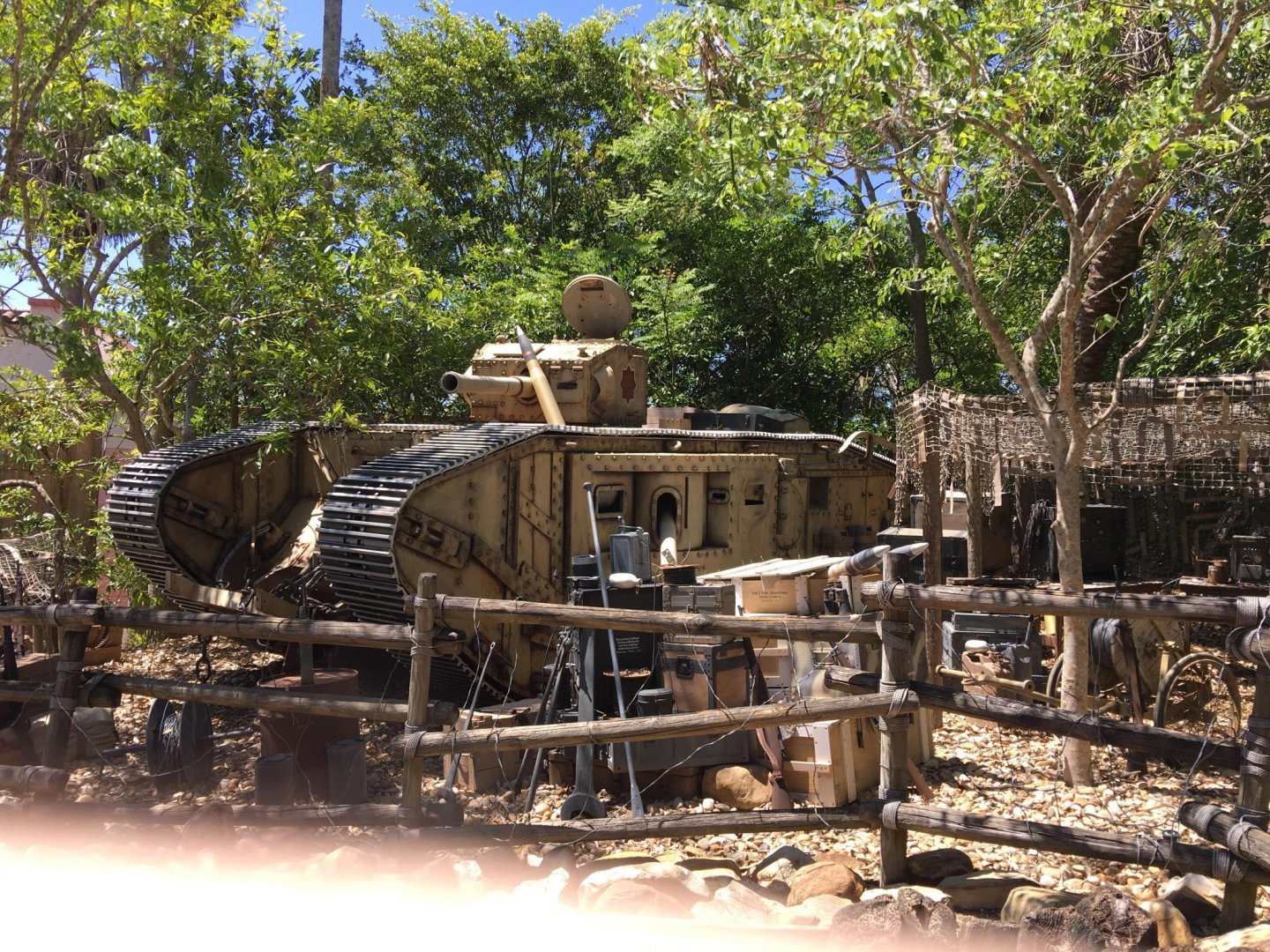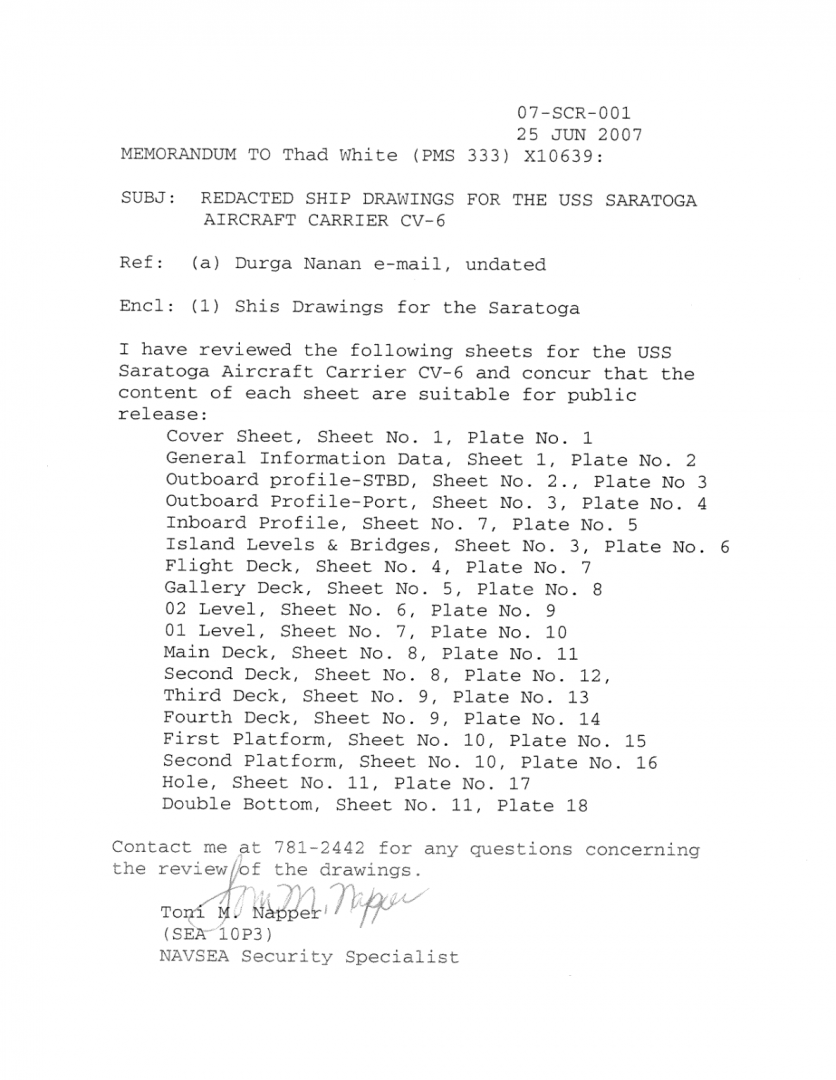-
Posts
4,377 -
Joined
-
Last visited
Content Type
Profiles
Forums
Gallery
Events
Everything posted by Egilman
-
Hi Rick, Welcome to the thread... You might want to pop over to the MSW new users thread and introduce yourself... Yes this thread is about modeling a ships hull in 3D software, ostensibly for the purpose of modeling said hull on a 3D printer... It wasn't intended to rate one software over another or really compare them but I can see where one can make judgments based upon what is being posted here... Soon I'm going to be posting about my test hull done in Rhino.... So far it's the best I've tried... Someone might take a look at your software, they are sure welcome to try, and I hope they report back here about it..... Again welcome to the Forum and thread... EG
-
Aberdeen Proving Ground Museum in Aberdeen, Maryland was closed in September 2010, the museum is now located at Ft Lee... and is still impressive, but nothing like the original.... Currently, the collection is used exclusively for training and not available for public viewing. Currently, only soldiers with an 89, 91, or 94 series MOS are authorized entry.
-
The MK VII tank, there were only three of them built, none of them survive... essentially a MK V with a new drive system.... They were cancelled in 1918 with the end of the war and the choice to go with the International MK VIII.... The Last Crusade Tank was actually a production prop... Built on an old excavator chassis, namely a HYMAC 590 and was powered by two rover V8 engines, drive gear installed and modified by a specialist engineer from Chertsey in Surrey, Diablo (Victor) Donnelly It was based on the real-world Tank Mark VIII which possessed no main top turret. The replica measured 36 feet (11 m) long and weighed 28 short tons. (25 t) On the MGM lot... It has since been repainted.....
-
As long as you don't call it a US Navy Yangtze river gunboat I think your good to go.... (although the designer, Boris Leven, loosely based it upon the USS Panay PG-45) It was a real ship built in Hong Kong and motored, (diesel powered not steam) it's way across the Formosa Strait to get to the shooting site... For the engine room scenes they acquired a 1926 triple expansion steam engine from an old trawler on the way to the scrap yards... Two of the largest movie props ever constructed.... She was eventually broken up in 1975 as the "Nola D" in Singapore. There are models of her around.....
-
Yes, doing it this way also humanizes the instructor and provides many opportunities to show how it works in a real environment.... The details, it's all in the details.... Thank you my friend for the linkage, I can't wait to see how you do it.... (but I will have a solid basis of understanding when you start) I guess he also offers them on Udemy (scroll down), at a higher price point but with full course materials... (he is also the highest rated Rhino instructor on Udemy, well deserved judging from the user commentary on his courses) Certainly is much superior to Linked-In Learnings offerings on Rhino... Again Thank You Richard, this is the pot of gold at the end of the rainbow on Rhino for me.... The Authors Webpage.... And his Facebook Page....
-
I've paid for two already, the first was the ship course that Richard vouched for and after binge watching the whole thing, (and archiving it) I took the middle one of the six ... (it's exactly same as the one with the watch image) Yeah, the one that starts you out from nothing... 70+ lessons long.... (and I keep eyeballin' that Spit tut) Looks like he's got the basics covered....
-
Yes Mark very reasonably priced.... There are a number of course authors out there for Rhino, he is the only one truly reasonable... Most are over the $1K range... I'm a few lessons into the middle one on the page, the total nube course... VERY VERY thorough... He hasn't left any questions yet... And personally I would go thru the starter course before anyone tackles the ship course of his that Richard posted... The ship course is decidedly an intermediate course, he treats you as you should know the basics and be able to do some things without his explanations or hand holding... Just like any good professor would.... The nube course he steps you through, bringing you along first by explaining the interface, not requiring you to do anything as he explains and shows how the software works... Then he starts stepping you through the tools in a follow me basis you following him.... Mirroring what he does..... You soon get the hang of how the tools function.... But even more important, he explains what is important and what isn't, what you will be using and what you won't (or only occasionally) I guess if I run into any questions they can be asked on his facebook page and I guess you can e-mail him directly... But the best part, he isn't droll he doesn't pass up his mistakes, (or excuse them, and he does make them) he runs you right on thru them showing you the correct way by correcting himself.... This is straight up education the way we remember it... {chuckle} You get the feeling from the start that he expects you to learn it... Well worth the minimal investment....
-

Redrafting the USS Sartoga (CV-60)
Egilman replied to halkun's topic in CAD and 3D Modelling/Drafting Plans with Software
The Original Plans were drawn in in 1/48th scale (1/4" to the foot) meaning your 6 foot drawing from the BoGP was redrawn reduced, (probably pantographed)... they were then photocopied onto blued linen, several plates to a page... To know what the thickened lines mean you would have to see the construction notes on the original prints as that is the only place that info would be... BoGP's only provide enough info for Damage control/Emergency repairs on board ship or at a non naval shipyard base... They do not replace construction drawings.... They really aren't worth much, but they do help the model builder, and understand the model builder could care less what all the voids inside the hull are for or why they are built that way... At this late date NARA probably has all the original builders plans on Microfilm, but the cost of a set of films for a ship is astronomical... A few decades ago they were relatively cheap you could get a complete set of ships drawings for a few hundred, today, it's a few thousand.... Trying to vectorize them is a worthwhile project, (although a daunting one) I don't think any one will have the data your looking for and paying a NARA researcher to find it for you is cost prohibitive as well... But if you want to go that way, I can refer you on to a few I know.... My best advise is to draw them up the way they are... Most people haven't a clue anyways, and most of them could care less... -

Redrafting the USS Sartoga (CV-60)
Egilman replied to halkun's topic in CAD and 3D Modelling/Drafting Plans with Software
Welcome to the board Halkun... You might want to jump over to the welcome thread and introduce yourself... I've done some drafting in the past, and have a complete BoGP (Booklet of General Plans) for the Saratoga dated '93.... Your drawing is the first 29 frames of the double bottom Plate 18, Very Nice.... Not much has changed as far as drafting terminology since I learned to draw (late'70's) What can we do for ya.... EG PS: BoGP's have no copyrites, they are public domain once declassified.... -
For me, I didn't even know such thig as history roll back even existed until I got four months into learning SW... In my experience as well it is hit or miss on if it messes something up downstream... But for small minor changes and adjustments it does work.... In Solidworks you can be pretty well assured if you roll back past a feature to make a change where the feature is involved in the change, it's going to complain..... Compound features (feature on top of a feature? will will almost always complain) I imagine it's the same in F360..... I've been considering using both SW & Rhino as complementary to each other.... But I don't know how the files will interchange yet.... It will depend on how well the two confabulate meshes... I'm far enough into Rhino to know that it makes real solid solids, (and you can check for holes in your model) not solids that claim to be solids, for 3D resin printing that's a godsend....
About us
Modelshipworld - Advancing Ship Modeling through Research
SSL Secured
Your security is important for us so this Website is SSL-Secured
NRG Mailing Address
Nautical Research Guild
237 South Lincoln Street
Westmont IL, 60559-1917
Model Ship World ® and the MSW logo are Registered Trademarks, and belong to the Nautical Research Guild (United States Patent and Trademark Office: No. 6,929,264 & No. 6,929,274, registered Dec. 20, 2022)
Helpful Links
About the NRG
If you enjoy building ship models that are historically accurate as well as beautiful, then The Nautical Research Guild (NRG) is just right for you.
The Guild is a non-profit educational organization whose mission is to “Advance Ship Modeling Through Research”. We provide support to our members in their efforts to raise the quality of their model ships.
The Nautical Research Guild has published our world-renowned quarterly magazine, The Nautical Research Journal, since 1955. The pages of the Journal are full of articles by accomplished ship modelers who show you how they create those exquisite details on their models, and by maritime historians who show you the correct details to build. The Journal is available in both print and digital editions. Go to the NRG web site (www.thenrg.org) to download a complimentary digital copy of the Journal. The NRG also publishes plan sets, books and compilations of back issues of the Journal and the former Ships in Scale and Model Ship Builder magazines.

